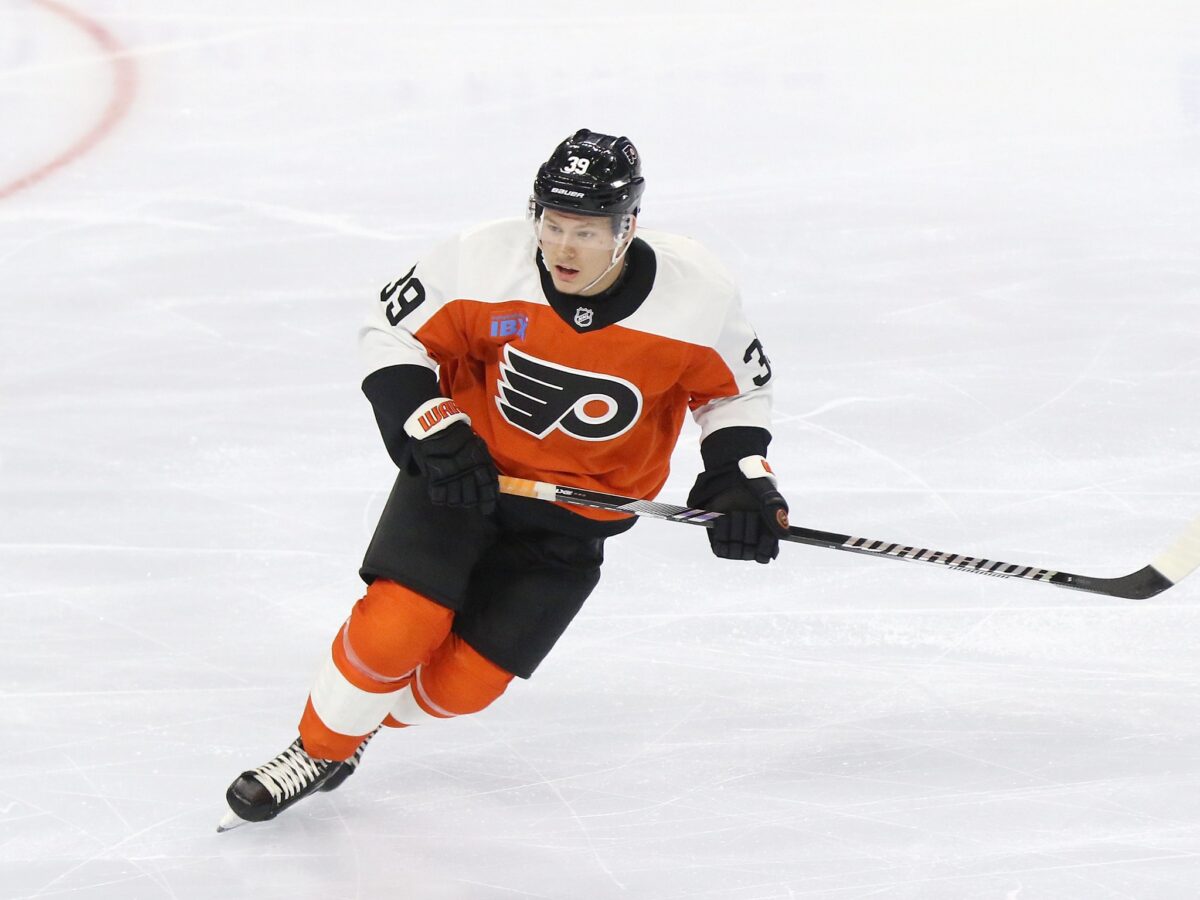One of the Calder Trophy favorites entering the 2024-25 season was Philadelphia Flyers rookie Matvei Michkov. With seven points (three goals, four assists) in seven games, he has definitely lived up to the hype. However, there’s a catch.
Michkov has yet to score a point at 5-on-5. One of them came at 4-on-4, while the other six have come on the power play. Some think this is an issue and claim he is too dependent on the man advantage, but I disagree. In fact, I am very encouraged. I’ll explain.
Michkov’s 5-on-5 Play Is Being Undersold by Poor Finishing
So far this season, Michkov has had quite a few instances like the clip below. At 5-on-5, he’s just not getting any puck luck—he is setting up plenty of grade-A chances despite having nothing to show for it. We can always say his teammates “missed a perfect chance” and estimate how many points he could have if they simply scored, but there’s a better way to do that. How impactful has the Russian phenom really been?
OMG KEVIN LANKINEN! 🙅 pic.twitter.com/KNt4xPqM17
— Sportsnet (@Sportsnet) October 12, 2024
The biggest thorn in Michkov’s side right now is his on-ice shooting percentage (oiSH%) at 5-on-5. This statistic is similar to regular shooting percentage, but it tracks shots from everyone on that specific player’s team while that individual is on the ice. To calculate oiSH%, the number of goals scored while that player is on the ice is divided by the shots on net it took to get there.
For example, let’s say Michkov is playing with Travis Konecny, Sean Couturier, Cam York, and Travis Sanheim for a shift. In that shift, they record four shots on goal—one of them goes in. That would be an oiSH% of 25 percent, regardless of how many shots Michkov took (it could be zero!). This scenario can be applied to a full game.
Now, let’s get into the specifics (stick with me). At 5-on-5, Michkov has been on the ice for zero goals and 46 shots on net, giving him a 0.0 oiSH% this season. That’ll improve significantly with more usage—it’s a number that is underselling his production.
Last season, the Flyers had an oiSH% of 7.65 at 5-on-5. That was 29th in the NHL, but it’s still quite a lot better than what Michkov has right now. Top-six forwards generally shoot higher than the team average, but I’ll use the 7.65 percent total and apply it to Michkov for simplicity. If that were his oiSH%, he’d be on the ice for approximately 3.52 goals at 5-on-5 instead of zero.
Since Michkov is already showing signs of a star-level player, I think it’s fair to say he could have three 5-on-5 points if the Flyers had any finishing right now. Seeing as he has a 100.0 individual points percentage (IPP; meaning he has points on every goal he’s been on the ice for), that’s a justified conclusion, in my eyes.
His 100.0 IPP is unsustainable, too (even the great players don’t get points on much more than 80 percent of goals scored while they’re on the ice). So, we can’t exactly say “Michkov should have 10 points right now.” At the same time, we can say that he is making a difference no matter how many skaters are on the ice—he has generated plenty of good looks. The eye and analytics test debunk the claims that the 19-year-old Russian isn’t doing enough at 5-on-5.
Michkov Scoring on the Power Play Is a Good Thing
Circling back to the idea that Michkov is too reliant on the power play, what if he is? Some are missing the big picture here—the Flyers’ man advantage has been historically unintimidating.
Over their last three seasons before Michkov came over to Philadelphia, the Orange and Black finished dead last in power-play percentage (PP%) on every occasion—that’s an NHL record. In 2023-24, their 12.2 PP% was the worst efficiency for any team in an 82-game season since 2013-14. Surely, it’s hard to be “reliant” on this, right?
After making no real changes in the offseason aside from adding Michkov, we saw an immediate shift in the man advantage (I wonder why?). In the preseason, the rate at which the Flyers created scoring chances skyrocketed from previous renditions of the team. In a premium article for The Hockey Writers Substack, I concluded that there’s a moderate correlation between a power play’s expected goals per 60 minutes (xGF/60; a metric that tracks the quality of scoring chances by a team) in the preseason and regular season. Two weeks before the 2024-25 campaign started, I used my data to make the bold prediction that Michkov could help the Flyers’ man advantage return to old form:
Related: Matvei Michkov Can Take Flyers’ Power Play to the Next Level
It’s obviously still pretty early, but doesn’t this version of the Flyers’ man advantage just feel different? It looks far more competent than ever before, and that’s not by accident. Michkov has helped transform one of the worst power plays in the 21st century into a unit that can hang with the big guns (10th-ranked PP% in the NHL at 24.1 percent). Forget the fact that he should have more points at 5-on-5—this is something only a superstar can do.

Instead of dismissing Michkov for his albeit outrageous six power-play points, he should be praised. He has proven to be the secret weapon that can finally help the Flyers take advantage of poor discipline from other clubs.
Until Michkov starts scoring at a typical 5-on-5 rate, you might hear some people say that he’s struggling in that department and needs the power play to make his numbers look good. Respectfully, not only are those people incorrect, but they are unintentionally giving him credit for reviving one of the worst man advantages in recent NHL history.
Stats courtesy of Natural Stat Trick
